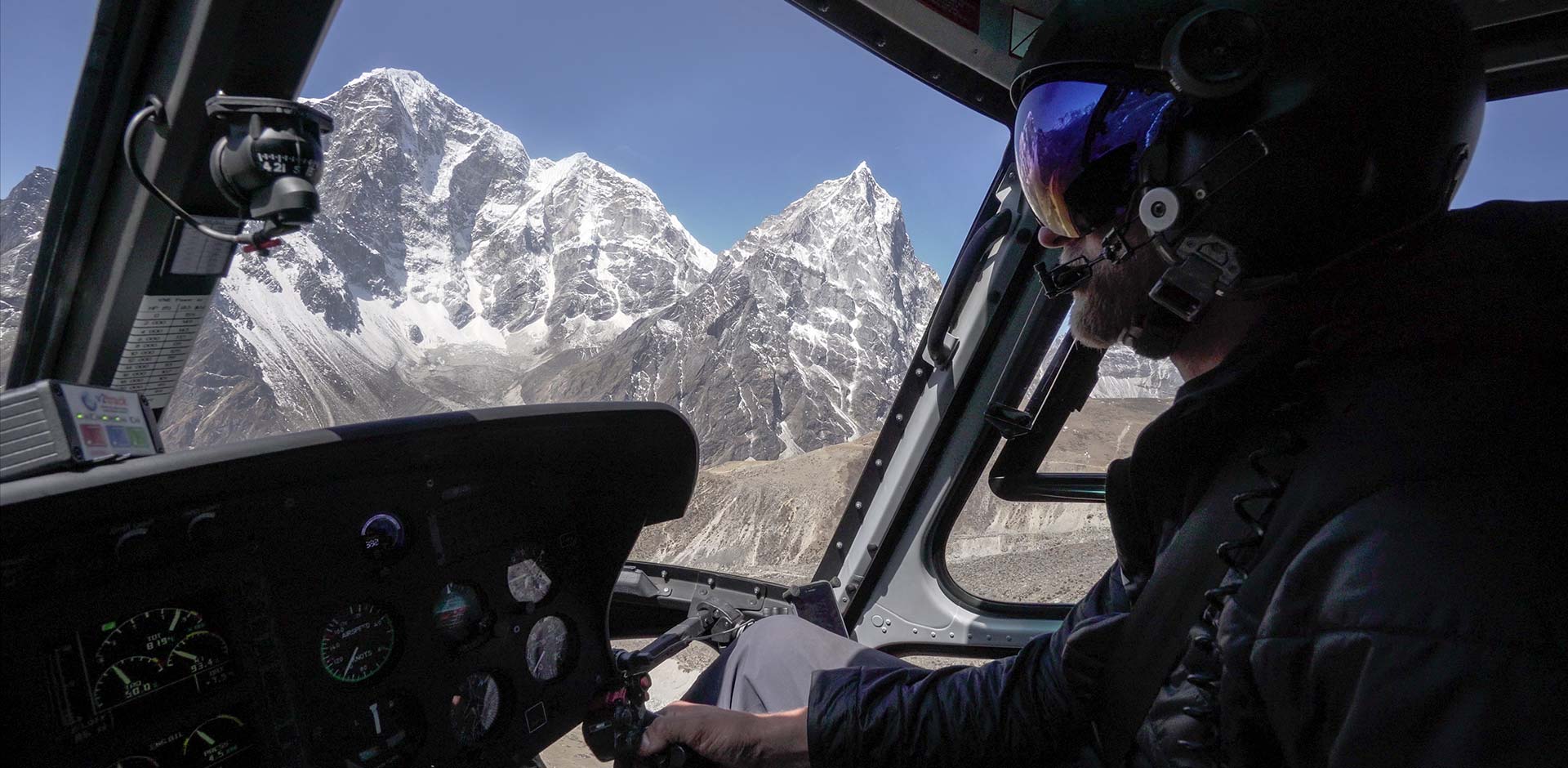Nepal is home to the highest peaks in the world, attracting trekkers from around the globe, and the Annapurna Circuit is one of the most popular trails. But, not everyone is suited to such hikes. The altitude sickness, long hiking days, and long prep time turns many to more modest treks.
The Poon Hill journey stays at a bracing 3,207 meters above sea level at its highest and is only a four to five day hike. Given that the majority of the trail is paved, it’s a way for beginner hikers to get stuck in, and it offers some of the best views of the Annapurna range.
A taste of rural Nepal
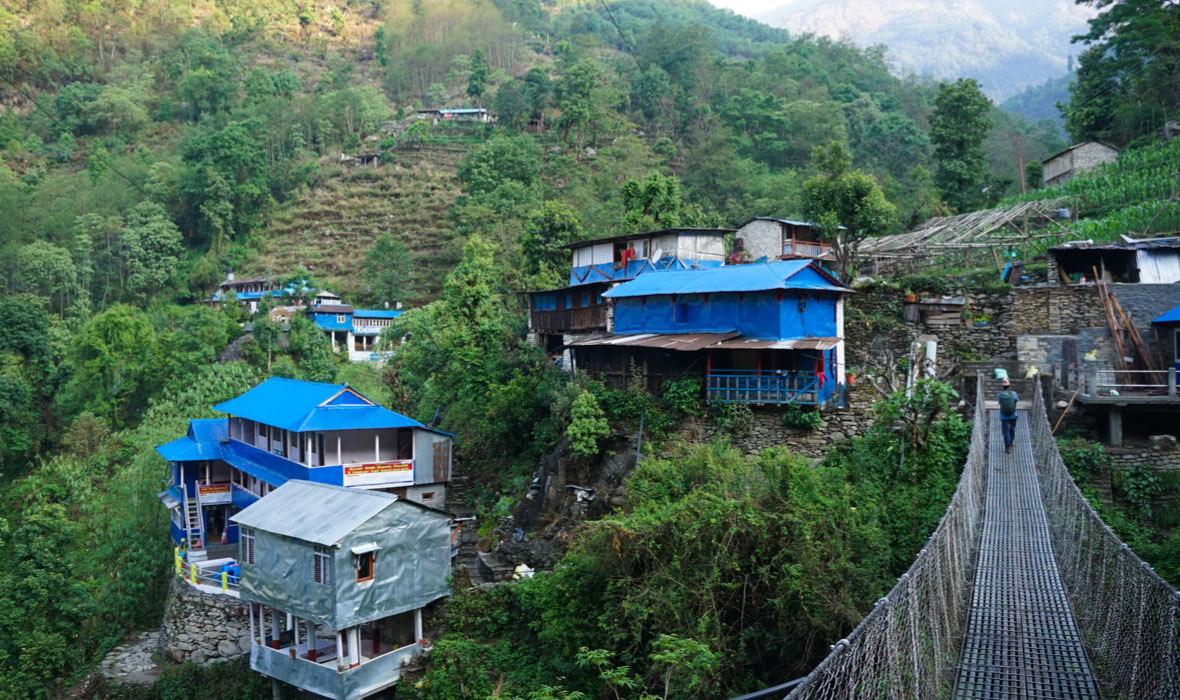
Despite being only two hours or so from Pokhara, the Poon Hill trail takes hikers up to the mountains where only small villages are found. The locals are mostly farmers or run local tea houses; the latter provides food in the traditional Nepali style.
Trekkers should know what they want and order together to avoid long waiting times and the best choices are always the local fare.The usual favorite is dal bhat, a common meal that travelers to India will know well. The dal stands for the lentil soup in the meal, and bhat means rice.
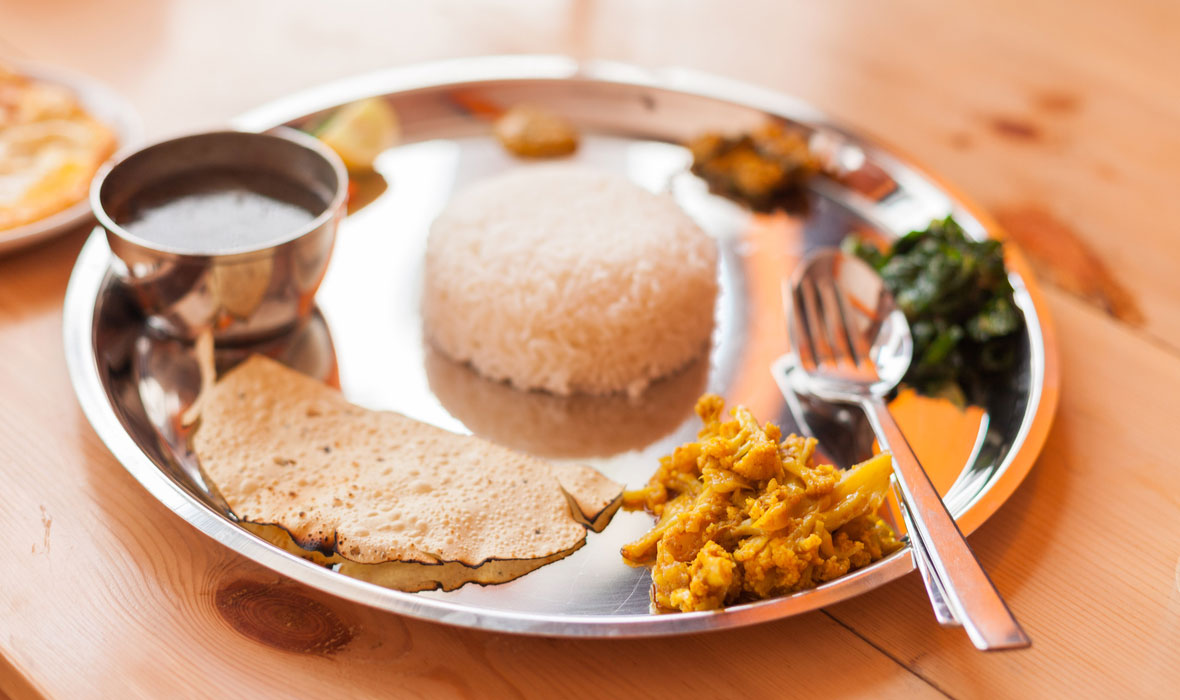
ABOVE: Dhal bhat, a great Nepalese meal to keep the energy flowing.
The Nepalese dal bhat also includes spinach and a non-spicy vegetable curry, all served on a round metal dish. Most tea houses offer unlimited refills, so it’s a pretty good dish to fuel the tank for more trekking. Another great choice are momos, the region’s answer to dumplings, complete with a variety of fillings.
Glimpse into Mountain Life
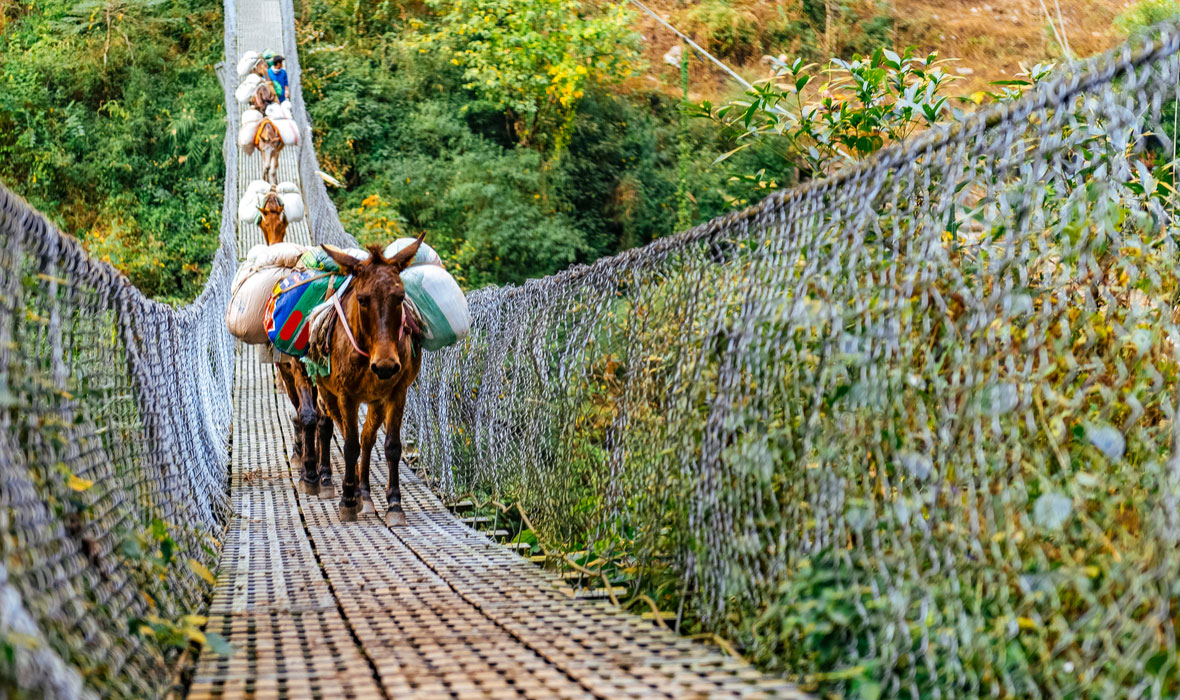
ABOVE: Donkeys on a metal suspension bridge.
Obviously, this trail is for those seeking to see sunrise at Poon Hill, but it is also a walkway that connects the many unique villages of the region. Few of these villages are accessible by jeep, meaning many still rely on more traditional transport to get around. Herds of horses and donkeys are often seen along the route. Their presence is announced by the telltale ringing of the bell on their collar, often accompanied by a single villager herding them to their next destination.
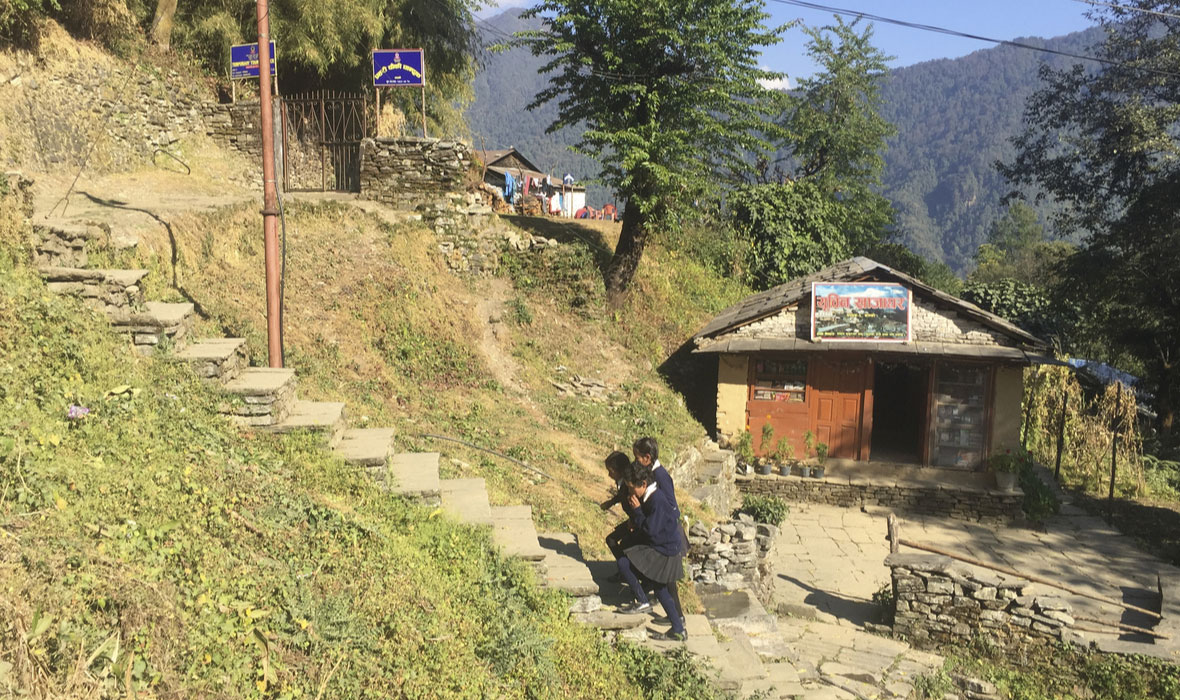
ABOVE: Small village area on the Poon Hill trek.
On the days when we pass villages in the morning, little figures often greet us with a smile. Dressed in red and white uniforms, they often trek up to two hours to get to school, which starts at 10am. Outside of the village, there are farmers and buffaloes working on the rice terraces that extend down the hill.

ABOVE: Prayer flags with a Himalayan background.
A big part of Nepal’s image are the prayer flags. There are five different colors to the flags, reflecting the five elements: fire, water, earth, metal, and wood. The flags that are seen around the mountains are horizontal, hanging as a form of blessing to bring peace. They are found on bridges, along trees, and around stacked stones. Our guide explained that the stacked stones are a makeshift stupa created to pay respect to the mountain gods in the absence of a proper temple.

ABOVE: Piled rocks on the Poon Hill trek.
The stacked stones are most frequently found atop raised platforms piled along the trails and around rivers. The former often acts a place to take a rest and the latter a photographer’s heaven.
Mountain Scenery
Nepal is famous for its mountain views, and you can see the Annapurna South, Nilgiri, and Dhaulagiri on Poon Hill, as well as Himalchuli and the fishtail mountain Machapurchare on the way to Ghandruk. But that’s not all the nature this trek has to offer. A portion of the trail extends along the Modi River. The stairs and trails cut through field after field of rice terraces dotted with villagers and beasts of burden. Some fields also grow corn, lending a sea of green to the grandeur of the scenery. The trek also goes through parts of the jungles, teeming with trees, hidden waterfalls, and ravines. If you extend your trek to Australia Camp, the hike back to the main road offers an exceptional panorama of Pokhara valley.
Sunrise at Poon Hill
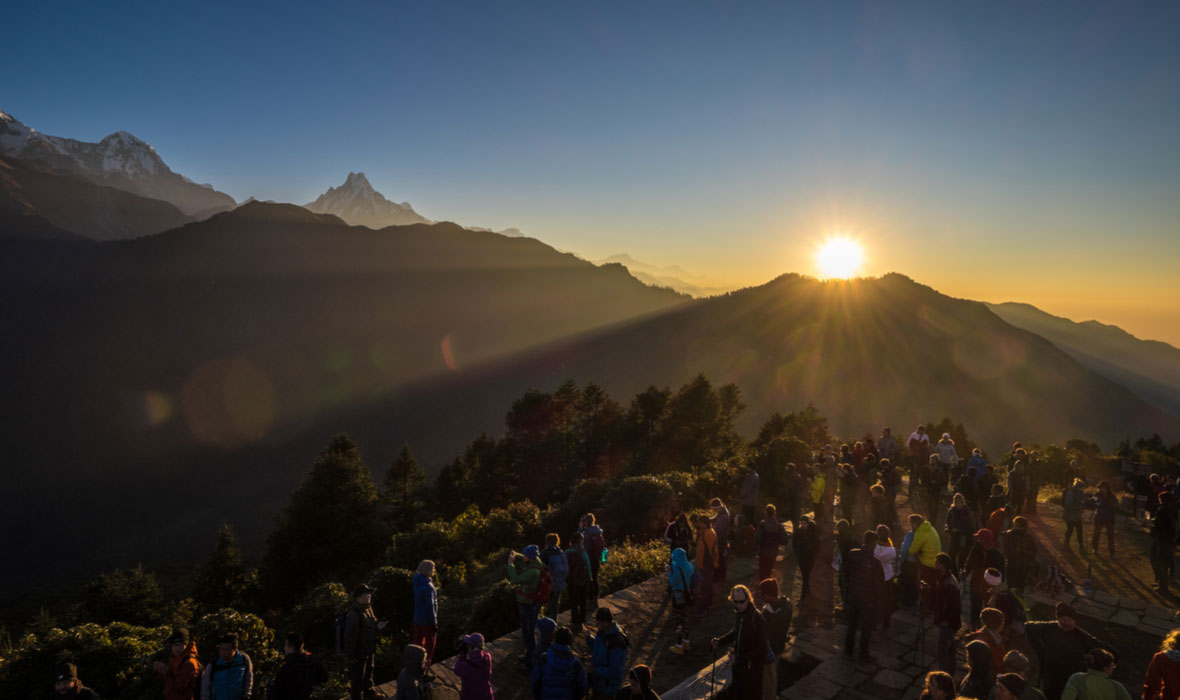
ABOVE: Sunrise atop Poon Hill
The focal point of the trip is, of course, none other than watching the sunrise atop Poon Hill. With a full view of the Annapurna range, it’s well worth the early morning start. There is nothing more magical than the refraction of light as the sun makes its way from behind the snow-capped mountains.
Be sure to watch this scene with a cup of steaming masala tea from the tea shop on the summit. Don’t miss the Poon Hill sign for the obligatory photo op or the view of Dhaulagiri – the 7th highest peak in the world – on the northern side.



